What a Podiatrist Can Do For YOU!
Shockwave Therapy [What is it? How effective is it? Cost & Is it worth it?]
Shockwave therapy is an effective treatment for podiatry conditions such as plantar fasciitis, Achilles tendonitis & MORE!
Look!
- Shockwave therapy is FDA approved for conditions such as plantar fasciitis.
- Studies show that radial shockwave is cost-effective for lower extremity conditions that are slow to get better.
- Studies further show that it is a safe alternative compared to invasive treatment like foot surgery.
If you are in Michigan, see us for a no-obligation consultation.
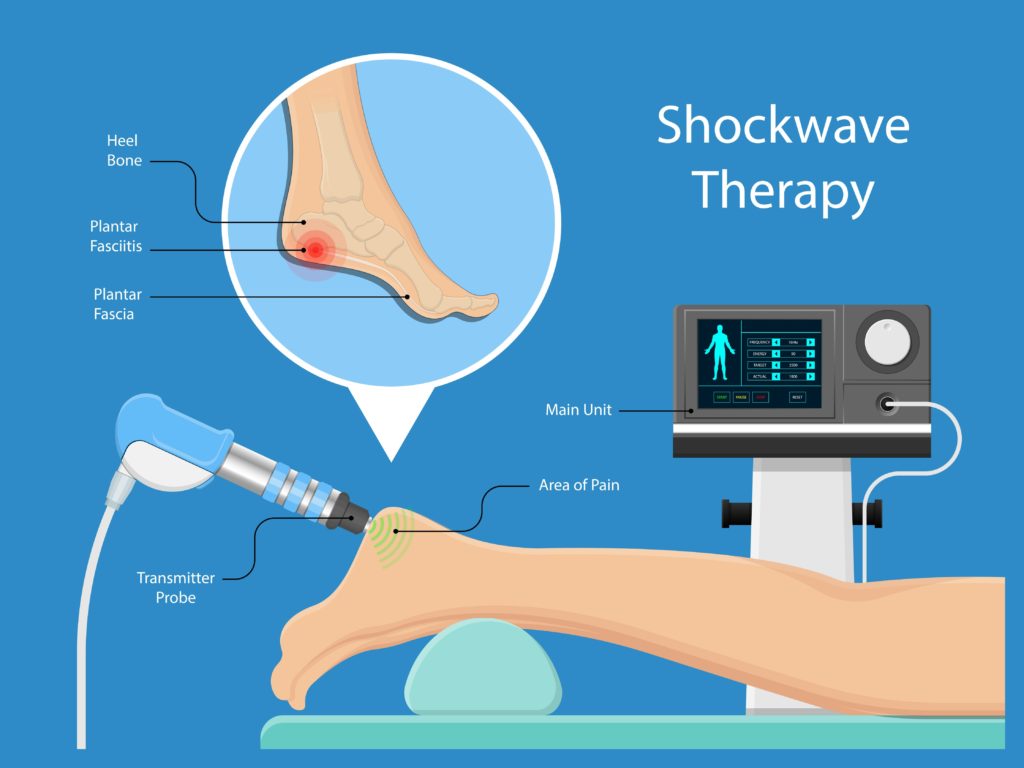
Table of Contents
Shockwave therapy near me:
At Prime Foot & Ankle Specialists of Michigan, we want to be the answer to the questions “What is the BEST shockwave therapy near me?”
What is shockwave therapy?
- Extracorporeal Shockwave Therapy is a non-invasive method that uses pressure waves to treat various musculoskeletal conditions.
- Shockwave therapy is a multidisciplinary device used in podiatry, orthopedics, physiotherapy, sports medicine, urology, and veterinary medicine.
- Its main assets are fast pain relief and mobility restoration.
- It is a non-surgical therapy with no need for painkillers makes it an ideal therapy to speed up recovery and cure various indications causing acute or chronic pain.
- Acoustic waves (shock waves) deliver a mechanical force to the body’s tissues.
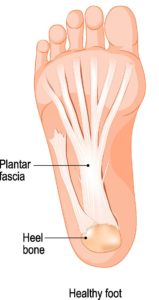
How does shockwave therapy work?
- Shockwave is an acoustic wave that carries high energy to painful spots and musculoskeletal tissues with subacute, subchronic, and chronic conditions. The energy promotes regeneration and reparative processes of the bones, tendons, and other soft tissues.
- Shockwaves are characterized by jump changes in pressure, high amplitude, and non-periodicity.
- The kinetic energy of the projectile, created by compressed air, is transferred to the transmitter at the end of the applicator and further into the tissue.
- Studies do show that plantar fasciitis is very effective.
How effective is shockwave therapy?
- Acoustic waves with high energy peaks used in Shockwave therapy interact with tissue causing overall medical effects of accelerated tissue repair and cell growth, analgesia, and mobility restoration.
- All the processes mentioned in this section are typically employed simultaneously and treat chronic, sub-acute, and acute (advanced users only) conditions.
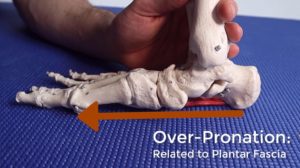
Shockwave therapy plantar fasciitis:
According to this study: Shock wave therapy was effective for plantar fasciitis treatment considering pain, function, and quality of life.
When should I avoid shockwave therapy?
- Complications are infrequent with shock wave therapy.
- People with poor sensation (neuropathy) or hypersensitivity in the target area should not have this procedure.
- Patients with open sores are not indicated for shockwave therapy.
- Shock wave therapy is not used in patients with heart conditions or seizures.
- Shockwave therapy should not be used during pregnancy.
- Make sure to discuss shockwave therapy with your podiatrist before undergoing the procedure.
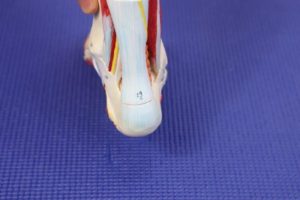
Radial shockwave therapy for plantar fasciitis:
What is plantar fasciitis?
- Plantar fasciitis is an excruciating condition where your heel may hurt, feel hot, or swell. The pain is a result of inflammation or microscopic tears of the plantar fascia. The fascia is a thin layer of tough tissue supporting the arch of the foot.
- Sometimes people refer to plantar fasciitis as “heel spurs,” but this is not generally accurate since the heel spurs result from plantar fasciitis. Heel spurs are a calcification that forms due to damage to the fascia.
- Often when you have plantar fasciitis, the pain is at its most intense when you first get out of bed. Sometimes it is noticeable at the beginning of an activity and gets better as the body warms up. Prolonged standing may cause pain, as well.
- Severe plantar fasciitis pain can cause loss of time from work and may lead to partial or total disability. Common surgical procedures used for the treatment of chronic plantar fasciitis may also lead to permanent disability.
2 Phases of Plantar Fasciitis:
There are two phases of the condition.
1)Acute Plantar Fasciitis:
- Acute fasciitis can be inflammation.
- Plantar fasciitis inflammation should not be treated with shockwave therapy.
- Only after the initial inflammation is reduced should shockwave be employed to break apart the thick stiff tissue and make it more flexible.
- Studies show this can stimulate new blood vessels and tissue growth to regenerate the chronically injured tissue.
- Anything that addresses rest and inflammation can be helpful.
- Your podiatrist may use a steroid injection, strapping, taping, orthotics, or lasers in this phase.
- If the condition has moved on to phase 2, the tissue is damaged (micro-tearing) and needs to be repaired.
2)Chronic Plantar Fasciitis:
- For phase 2 of chronic plantar fasciitis (fasciosis), shockwave therapy is FDA approved and shown to prevent surgery.
- Shockwave therapy can more effectively stimulate the chronic phase that results in scar tissue and disorganized tissue throughout the plantar fascia bands.
- ESWT shockwave therapy is a device proven to create this repair without surgery.
Shockwave therapy plantar fasciitis evidence:
There is growing evidence for how effective shockwave therapy can be for chronic plantar fasciitis.
- This level 1 evidence study shows that shockwave therapy is very effective for treating plantar fasciitis.
- This randomized level control study looked back at all shockwave studies since 2019 for plantar fasciitis. It found significant improvement compared to the control group at 3 months and 12 months after the recommended shockwave therapy treatments for chronic plantar fasciitis.
- This study compares shockwave therapy vs. Ultrasound therapy. It found that radial shockwave therapy for plantar fasciitis and ultrasound therapy were both very effective. It found that radial shockwave therapy was more much effective than ultrasound therapy.
- This study shows that cortisone shot is more effective for heel pain in the show term, but at 3-4 months, shockwave therapy is superior to injection therapy. This study summarizes a moderate level of evidence that suggests that ESWT may be effective for some lower limb conditions in all phases of the rehabilitation.
- This study reports that that radial shockwave therapy is a cost-effective treatment for tendonitis and soft tissue disorders and calcification (spur formation)
- This study reported 51% pain reduction at 4 weeks and 75% pain reduction at 8 weeks with treatment. This is for lower extremity soft tissue swelling and pain to the lower extremity.
- This study showed that radial shockwave therapy is effective in treating knee osteoarthritis.
- This research paper states that the working mechanism of radial shockwave therapy is tendon remodeling, breaking up calcified tissues, and increased development of blood vessels in the tissue.
- This review study shows that reported results for tendinopathies of the shoulder, elbow and heel have shown consistent positive results in favor of ESWT over placebo ESWT in individuals who have failed conservative therapy.
How Effective is ExtraCorporeal Shockwave Therapy (ESWT)?
- The effects of ESWT are best documented in areas of changes in tissue density, such as those where a tendon attaches to a bone and where a bone attaches to a ligament.
- For this reason, it is very effective for painful connective tissue in the heels. Additionally, ESWT gives hope by relieving pain, eliminating the risk factors associated with surgery, and allowing people to resume their normal lives.
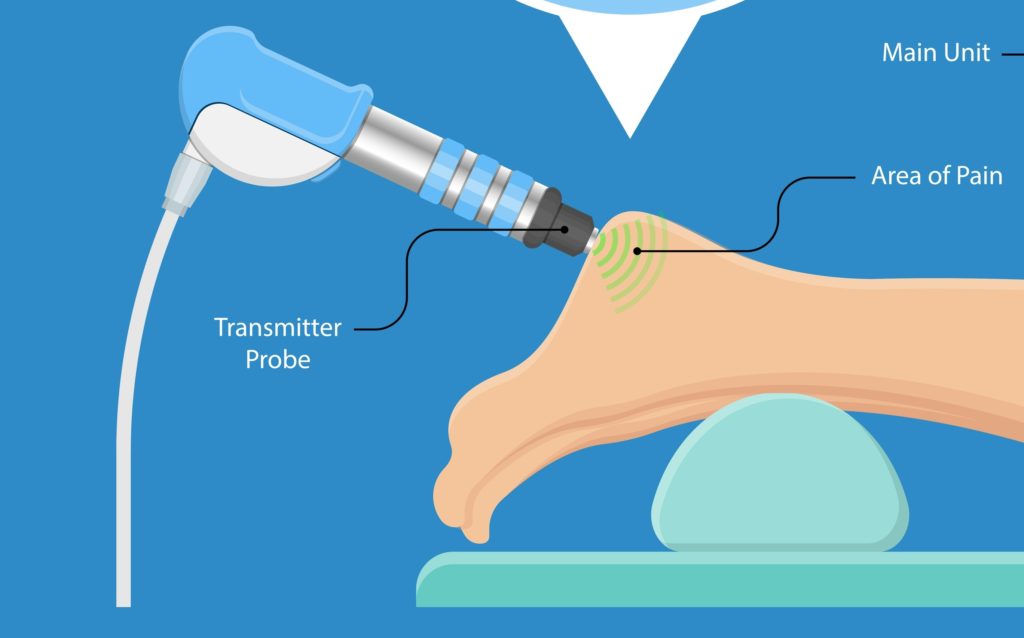
Shockwave therapy Achilles Tendonitis evidence:
There is strong evidence that Shockwave therapy is very effective for Achilles tendonitis and insertional Achilles tendonitis within 3 months.
- This study shows that cortisone shot is more effective for heel pain in the show term, but at 3-4 months, shockwave therapy is superior to injection therapy.
- This study reports that that radial shockwave therapy is a cost-effective treatment for tendonitis and soft tissue disorders and calcification (spur formation)
- This study reported 51% pain reduction at 4 weeks and 75% pain reduction at 8 weeks with treatment. This is for lower extremity soft tissue swelling and pain to the lower extremity.
- This study showed that radial shockwave therapy is effective in treating knee osteoarthritis.
- This research paper states that the working mechanism of radial shockwave therapy is tendon remodeling, breaking up calcified tissues, and increased development of blood vessels in the tissue.
- This review study shows that reported results for tendinopathies of the shoulder, elbow, and heel have consistently positive results in favor of ESWT over placebo ESWT in individuals who have failed conservative therapy.
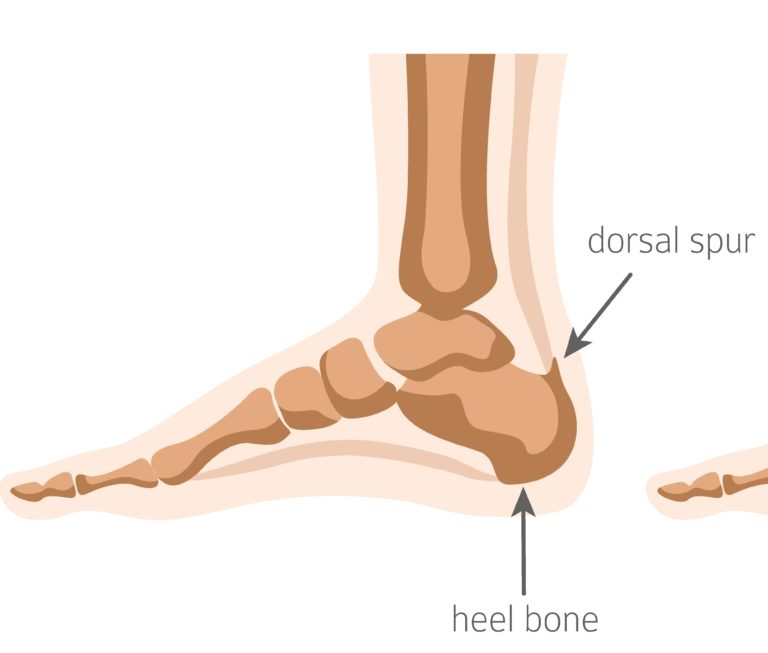
Shockwave Therapy Near Me:
At Prime Foot & Ankle Specialists, we offer shockwave therapy.
We believe this is an excellent treatment with excellent results. So now you have the answer to the question, “Is there shockwave therapy near me?”
Scientific Evidence for These Conditions:
Shockwave therapy for plantar fasciitis:
- Plantar fasciitis is one of the most effective conditions treated by radial shockwave therapy.
- This 2021 study says that shockwave therapy is a very effective treatment, but it is limited by a few providers and a lack of equipment availability.
- This scientific study literature review attests to the high effectiveness of shockwave treatment for plantar fasciitis.
- We list numerous studies above about how cost-effective and beneficial this can be for this condition.
Shockwave therapy for Achilles tendonitis:
- This 2019 study shows that shockwave therapy is a validated and effective treatment for Achilles tendon pain.
- Achilles tendinitis is also a very successful condition that is treated by shockwave therapy.
- This treatment is effective for both insertional Achilles tendonitis and midsubstance Achilles tendonitis.
- We see specific benefits in the region 2-6 cm above the heel insertion.
- We also see excellent results at the Achilles tendon insertion site into the back of the heel bone.
Shockwave for therapy myofascial pain:
- Radial shockwave therapy is especially effective in treating myofascial pain.
- It treats the myofascial pain by sending radial shockwaves deeper than a treatment like ultrasound would.
- This 2021 study says that shockwave therapy is a very effective treatment, but it is limited by a few providers and a lack of equipment availability.
- It can also stimulate remodeling of the myofascial and stimulate blood vessel growth even 2-3 months after treatment.
Shockwave therapy for tendinopathy:
- This treatment has been shown in the studies to be very beneficial for tendinopathy.
- This 2021 study says shockwave therapy is a very effective treatment for tendinopathy, but it is limited by a few providers and a lack of equipment availability.
- Specifically, we have seen better results than ultrasound as the shockwaves can penetrate more unidirectional and deep fascia than ultrasound therapy.
- The studies have been shown just as effective as eccentric loading with better results at 3 and 4 months due to tissue remodeling and increased blood vessel growth.
Shockwave therapy for posterior tibial tendonitis:
- Shockwave therapy can be very effective for posterior tibial tendonitis.
- In our opinion, posterior tibial tendonitis is an acute condition that can be corrected well with good shoes, custom orthotics, and a good lace-up ankle brace.
- We believe that shockwave therapy is not a primary treatment protocol for posterior tibial tendonitis.
- This 2021 study says that shockwave therapy is a very effective treatment for tendon and ligament pain. Still, it is limited by a small number of providers and a lack of equipment availability.
- If there is chronic scar tissue visualized on ultrasound, then shockwave therapy can be beneficial.
- We do not recommend utilizing shockwaves for acute posterior tibial tendonitis.
Plantar fibroma shockwave therapy:
- This 2020 study shows that shockwave therapy is an effective and validated treatment for reducing Lederhose disease, plantar fibromatosis, and plantar fibroma formation to both feet.
- Utilizing shockwaves and shockwave treatment for plantar fibroma is one of the most beneficial treatment options that we see.
- We have seen outstanding improvement for plantar fibroma pain utilizing shockwave therapy.
- This is probably the most beneficial treatment that we can perform for plantar fibroma pain.
- Personally, we have significantly reduced the amount of surgery do for plantar fibroma formation with the ability to utilize a device like a shockwave therapy.
Shockwave therapy for arthritis:
- There have been numerous studies detailing how effective shockwave therapy can be for osteoarthritis.
- This 2019 study shows that knee osteoarthritis is not reversed.
- We have at length some of the above under the plantar fascia evidence section.
- There have been studies in the past regarding shockwave treatment for knee osteoarthritis.
- It is also beneficial for treating calcification of tendons and bone spur formation that extends out into the tendons.
Shockwave therapy for bone spurs:
- Shockwave therapy is fairly effective for the treatment of calcification within tendons and bone spur formation.
- We see particular effectiveness for heel spur formation both on the heel’s bottom and the heel’s back.
- Studies show shockwave therapy can action remodel scarred thick tendon tissue, remodeling calcified tendon tissue and bone, and stimulating new blood vessel growth to create tissue regeneration within the area.
- We utilize shockwave therapy for plantar fascia pain.
- Plantar fasciitis heel spurs, the bottom of the heel spurs, insertional Achilles tendonitis heel spurs, which are back of the heel spurs.
Shockwave therapy for scar tissue:
- Utilizing shockwaves to break up scar tissue is very beneficial for us.
- We specifically see good benefits for Morton’s neuroma scars, old hard bunion scars.
- Bottom of the foot scars from puncture injuries, the bottom of the heel scars from previous plantar fascia surgeries, and Achilles tendon rupture and repair scars.
- We believe that shockwave therapy in our hands has shown excellent results.
- We have seen even in just 1 or 2 treatments significant softening and improvement of the scar.
Shockwave therapy for proximal hamstring tendinopathy:
- This is an off-label use for us as podiatrists, so we do not provide proximal hamstring tendinopathy treatment at our clinic.
- But studies show that it can be very beneficial at a high setting and break up the stiffness and scar tissue within the hamstring.
- The difficulty is that this is deep tissue, and if there is a significant fat pad between the hamstring and the skin, this can limit the ability of the shockwave to break up the scar tissue in its intense region.
- Studies do show that shockwave therapy can penetrate deeper than ultrasound therapy can.
Morton’s neuroma shockwave therapy:
- As posterior tibial tendonitis, shockwave therapy is probably not the ideal treatment for Morton’s neuroma pain.
- At our clinic, we specialize in treating Morton’s neuroma pain and treating revision surgery for Morton’s neuroma.
- Our personal recommendation is to not focus on utilizing shockwave therapy for Morton’s neuroma, as we have not had a great success as we have had for other conditions.
- If you have Morton’s neuroma pain, we have numerous treatment methods such as first appointment premade orthotics that can be modified, custom orthotics, various injection therapies.
- We believe that we can get almost every Morton’s neuroma better if given a chance!
Shockwave therapy for bursitis.
- We have had a lot of success for retrocalcaneal heel bursitis and back of the heel bursitis utilizing shockwave therapy.
- This is a very beneficial treatment for back of the heel pain and insertional Achilles tendon pain, which has shown outstanding results.
- As the bottom of the heel pain, the back of the heel pain has shown outstanding improvement with shockwave therapy.
- We have numerous patients that have had surgery and other treatment options that have seen excellent results very rapidly from this type of treatment.
Shockwave therapy for calcific tendonitis:
- We do list numerous studies above where shockwave treatment can be very beneficial for calcific tendonitis.
- Studies show that the mechanisms of shockwave treatment’s action are remodeling of the scarred thick tendon tissue, remodeling calcified tendon tissue and bone, and stimulating new blood vessel growth to create tissue regeneration within the area.
- We do list specific case reports where a bone spur did regress and close down in size.
- This is with the working theory of new blood vessel formation and remodeling of the tissue.
Shockwave therapy knee tendonitis:
- Studies do show that shockwave treatment is beneficial for her knee tendonitis.
- Further studies do show that shockwave therapy is a cost-effective and worthwhile treatment.
- As we are podiatrists, we do not perform knee therapy.
Shockwave therapy for heel pain:
- We have had significant improvement with shockwave therapy for both bottoms of the heel pain and the back of the heel pain.
- We believe shockwave treatments for plantar fasciitis heel pain and Achilles tendonitis heel pain to be extremely beneficial.
- Numerous studies cite the cost-effective nature, the rapid results, and the low-risk nature of pursuing shockwave treatment for heel pain.
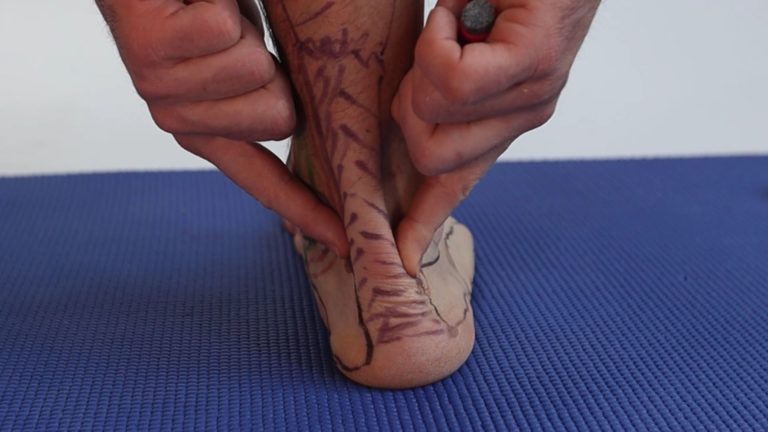
Frequently Asked Questions:
What is extracorporeal shock wave therapy?
- Shock wave therapy is a non-invasive method that uses pressure waves to treat various conditions in the body.
- These include plantar fasciitis, Achilles tendonitis, plantar fibroma pain, Achilles tendon, and muscle pain.
- Acoustic waves (aka shock waves) deliver a mechanical force to the body’s tissues.
- This can cause increased blood flow and blood vessels to develop in chronic and painful tissues.
What signs indicate this therapy is needed?
- Shock wave therapy may treat conditions such as degenerated tendons, Achilles tendonitis, plantar fasciitis, plantar fibroma formation, back of the heel, and bottom of the heel pain.
When should I avoid this therapy?
- Complications are infrequent with shock wave therapy.
- People with poor sensation (neuropathy) or hypersensitivity in the target area should not have this procedure.
- Feet & legs with open sores should also be avoided.
- Shock wave therapy is not used in patients with heart conditions or seizures.
- Shockwave therapy should not be used during pregnancy.
- Shockwave therapy should be discussed with your podiatrist before undergoing the procedure.
How does shockwave therapy work?
- A noninvasive probe is applied to the skin.
- An electrical charge creates an energy wave that is focused on the area of concern.
- The shock waves create a force on the tissues that may induce healing. This will allow the formation of blood vessels into the area.
- There is still developing evidence on how this procedure works.
- Some studies suggest that it may be that shock waves cause inflammation and improve blood flow to encourage the body to repair and heal itself.
- Studies do show that increased blood vessel formation does occur in the new tissue leading to tissue healing.
How is shockwave therapy performed during the appointment?
- Shock wave therapy is a non-surgical procedure.
- A probe is placed on the skin after a gel is applied to help conduct the shock waves.
- Low-energy shock wave therapy often is performed without anesthesia.
- Therapy is more successful with active patient participation, where the patient tells the therapist whether or not the probe is in the area of pain.
- One or more treatment sessions may be needed for chronic tissue problems to resolve.
- We like to perform on average 2-6 sessions within a 2-3 week period.
What happens after the procedure?
- Patients typically bear weight after treatment.
- Protected walking and running are allowed to occur immediately afterward.
- Although the first time, patients are advised to reduce physical activity for one to two weeks after treatment.
- There may be some initial soreness.
- Shock wave therapy may give good outcomes for some tendon problems or chronic degenerative conditions.
- Examples include Achilles tendonitis and plantar fasciitis.
Shockwave therapy potential complications:
- The main complications are pain and hypersensitivity at the site of treatment.
- These problems typically resolve with time.
- Pain and disability may persist when shock wave therapy is not successful.
Shockwave therapy may be useful in treating which disorder:
- Plantar fasciitis.
- Achilles tendonitis.
- Insertional Achilles tendonitis.
- Myofascial pain & pain of the myofascia.
- Tendinopathy.
- Posterior tibial tendonitis.
- Plantar fibroma.
- Arthritis, calcification & osteoarthritis.
- Bone spurs & heel spurs.
- Scar tissue.
- knee tendonitis
- Proximal hamstring tendinopathy.
- Morton’s neuroma.
- Bursitis & retrocalcaneal bursitis.
- Calcific tendonitis & calcific tendinopathy.
- Bottom of the heel pain & back of the heel pain.
Is there pain after shockwave therapy?
In our experience, after using shockwave therapy on hundreds if not thousands of patients, there is minimal pain after shockwave therapy.
The biggest predictor of pain after shockwave therapy is the degree of inflammation associated with treating the injury even before utilizing shockwave therapy.
This means that if there is a brand-new injury or bruise, this combined with shockwave therapy can cause some more soreness to develop.
On the other hand, chronic thick stiff scar tissue usually feels more loose and flexible almost immediately after using the radial shockwave therapy device.
We find very predictable improvement and minimal pain immediately after using shockwave therapy with the proper patient selection.
For most patients, shockwave therapy feels like a very effective massage that immediately leads to the tissue loosening up and feeling better.
Proper patient selection should prevent there from being any pain after shockwave therapy.
What does shockwave therapy feel like?
Patients frequently ask, “what does shockwave therapy feel like?”
Shockwave therapy with proper patient selection should feel like a vigorous massage.
We believe that shockwave therapy is best suited for chronic, stiff, and calcified soft tissue in the foot & ankle.
This means chronic injuries that are not getting better, such as plantar fasciitis, Achilles tendonitis, plantar fibromas, scar tissue, benefit the most from radial shockwave therapy.
In these cases, almost immediately after, the patient should feel better, looser, like after a good massage.
Is shockwave therapy safe?
Shockwave therapy is FDA approved for conditions such as plantar fasciitis. It is generally considered a noninvasive and safe therapy.
Personally speaking, after thousands of patients and millions of cycles of shockwave therapy utilized, we have had minimal to no problems.
The biggest problem that we have seen is that if shockwave therapy is misused on fresh or recent injuries, this could cause slightly more pain.
With the proper patient selection, the side effects of shockwave therapy could be greatly reduced.
With proper patient screening and selection, the results have been extremely safe, cost-effective, and beneficial towards avoiding surgery.
Radial shockwave therapy is extremely safe compared to the risks of surgery for conditions like heel spurs, chronic plantar fasciitis, and chronic insertional Achilles tendonitis.
Can shockwave therapy cause damage?
Patients sometimes asked the question, “Can shockwave therapy cause damage?”
The answer to his question is that the FDA has approved shockwave therapy for conditions of the foot, such as plantar fasciitis.
We have listed numerous studies showing how effective, cost-effective, and safe radial shockwave therapy can be.
We are huge fans of radial shockwave therapy.
We believe that the chance of causing damage is minimal, and we have had very few problems. This is true especially compared to surgery for these conditions.
It is extremely safe compared to other invasive options like a cortisone injection.
Shockwave therapy for plantar fasciitis, Achilles tendonitis, scar tissue, plantar fibromas is very safe and effective.
What are the shockwave therapy risks?
Does radial shockwave therapy pose any risks? The answer is every type of medical therapy is never risk-free.
Shockwave therapy is FDA approved for foot and ankle conditions such as plantar fasciitis.
We list studies that show how effective shockwave therapy can be, how cost-effective it can be, and how beneficial the results and evidence for shockwave therapy can be.
We believe once weighed against therapy such as surgery and injections, shockwave therapy is by far the safest and low-risk option.
What is the difference between ultrasound and shockwave therapy?
Ultrasound usually consists of periodic oscillations with lower bandwidths.
Ultrasound therapy applies an alternating high-frequency load to the tissue, with a frequency range of several megahertz, thus leading to heating or tissue soreness at high amplitudes.
Shock waves are singular positive pressure pulses followed by small tensile wave components(in the direction of the shock wave propagation).
The shockwave is a forward-directed energy ideal for deep tissue without affecting the tissue in front of it.
Shockwave can be considered as more of a deep-focused forward-directed wave vs. ultrasound’s alternating more high-frequency range.
The working theory is that shockwave therapy can remodel tissue calcification, encourage tendon and soft tissue remodeling, and stimulate blood vessel development into this scar tissue (as mentioned in the studies above).
How much does shockwave therapy cost?
The biggest question most patients have is, “how much does shockwave therapy cost?”
The answer is shockwave therapy is generally not covered by medical insurance even though it is FDA approved.
- The cost of shockwave therapy is lower than a standard medical appointment.
We offer different packages that are reduced in cost for more chronic injuries that may require more treatment.
We believe that it is not much more than a standard co-pay or co-insurance for a standard insurance plan in some cases.
We reference studies above that show between 2-6 treatments over a period of approximately 2 weeks has shown the best results at 1 month in 3 months compared to other treatments.
The studies we reference above showed that shockwave therapy is more cost-effective when weighed against repeated doctor’s visits, time off work, and potentially laying plantar fasciitis or Achilles tendonitis surgical options.
- We would recommend scheduling an appointment with us and potentially even performing a non-obligation test session to see how well shockwave therapy will work for you.
We stand behind the benefits of radial shockwave therapy and are cold laser therapy. We will do our best to ensure that it is a cost-effective treatment for all of our patients and work with them to make their treatment successful.
Does shockwave therapy work for heel spurs?
- This scientific paper shows that shockwave therapy can have success in remodeling bone spurs in the lower extremity.
- We list and detail numerous studies regarding shockwave therapy for plantar fasciitis and heel pain above.
- Shockwave therapy is shown to be a very cost-effective, safe, and productive treatment option in treating the bottom of the heel pain and back of the heel pain.
- Studies are showing that heel spurs can be remodeled in the foot and ankle.
Can you treat plantar fasciitis radial shockwave therapy?
Yes, it is possible to treat plantar fasciitis with radial shockwave therapy.
Above, we list numerous studies that are extremely effective in treating the bottom of the foot and heel pain.
Shockwave therapy is FDA approved for plantar fasciitis. Studies do show that it is cost-effective when compared to other treatment options.
We personally have excellent results with radial shockwave therapy. It allows us to avoid surgical treatment for the foot and ankle.
Podiatry shockwave therapy?
Shockwave therapy is cyclically proven to be cost-effective and provide faster healing when compared to other treatment options for podiatry conditions.
We really believe that radial shockwave therapy is very beneficial for treating chronic tendonitis and bone spur conditions.
How much does shockwave therapy cost?
Shockwave therapy is generally not covered by insurance. We believe that Prime Foot & Ankle Specialists’ cost is comparable to most insurance plan’s co-pays or coinsurance, and we do our best to keep the cost as reasonable as possible.
An overwhelming amount of studies show shockwave therapy is very cost-effective, and it is very good at getting people back to work fast.
Shockwave therapy has also proven to reduce the need for plantar fascia surgery, Achilles tendon surgery, bone spur surgery, heel spur surgery, and other types of foot surgery. (If you do consider surgery, we would recommend considering minimally invasive foot surgery.)
We believe that getting back to work and pain-free as quickly as possible is one of the biggest benefits possible. For this reason, we believe that shockwave therapy is very cost-effective and worth it.
Has the FDA approved shockwave therapy?
Yes, shockwave treatment is FDA approved in the United States. There is a consensus that it is a very safe and non-invasive therapy.
We have performed thousands of treatments as well as millions of cycles of shockwave treatments.
There have rarely, if ever, been any significant side effects.
No medical treatment is completely side-effect-free, but we believe that shockwave therapy presents very minimal side effects compared to other possible treatments.
Can you exercise after shockwave therapy?
Numerous patients ask, “can you exercise after shockwave therapy?”, The answer is yes, you can exercise just about immediately after shockwave therapy.
In some cases, if you have a fresh injury or significant injury, you may not exercise, but this is likely not related to shockwave therapy.
We have been allowing patients to exercise for years after shockwave therapy without any significant problems appreciated.
Does shockwave therapy hurt?
The patient sometimes asks, “does shockwave therapy hurt?” The answer is, in most cases, NO.
If you have a fresh injury in significant pain, any touching can cause significant pain. Shockwave treatment is no different in these fresh acute injuries.
In our opinion, shockwave therapy should not be indicated for a fracture or acute injury.
Shockwave therapy, if utilized on chronic and stiff tendons, calcification, bone spurs, plantar fasciitis, or Achilles tendinitis – then the results can be with very little pain or hurting.
Shockwave therapy how many sessions?
Some conditions such as scar tissue softening may only require 1-2 sessions, whereas other conditions can require more treatments.
In general, more chronic and painful conditions can benefit from about 2-6 treatments on average, over approximately 2-4 week periods.
When looking across the scientific literature, these therapies like injections are more beneficial within the first month in pain relief.
But when you look at the 2, 3, 4, 6, and 12 month periods, then shockwave therapy is shown to be 1 of the most effective, if not the most effective, treatment option in the scientific literature.
Shockwave therapy works by reorganizing the thick scarred tissue in the Achilles tendon, plantar fascia, bone spurs, and calcified tendons.
For this reason, there is a delayed effect to shockwave therapy even after its use.
We will also focus on performing a biomechanical assessment, a gait analysis, dispensing orthotics, talking about shoe gear, and identifying any other obstacles that may prevent your treatment.
Is foot shockwave therapy worth it?
We are biased as podiatrists who regularly use this, but we strongly believe that shockwave therapy for foot conditions is very with it.
An overwhelming amount of studies confirm the benefit of shockwave therapy for foot conditions such as plantar fasciitis, Achilles tendinitis, and more.
What is shockwave therapy aftercare?
Shockwave therapy aftercare is very minimal and low maintenance.
Nothing specific needs to be done, even possible to exercise immediately after your shockwave treatment.
We believe that a comprehensive treatment plan for your foot and ankle condition consists of crosstraining, avoiding damaging activities, wearing good shoes, getting good custom orthotics, getting a good brace, and evaluating your biomechanics completely to make sure no injuries are being missed.
Focused Shockwave Therapy vs. Radial Shockwave Therapy Treatment:
We do provide both focused shockwave therapy and radial shockwave therapy. Focused shockwave therapy can be beneficial in targeting smaller and more stiff tissues.
We think it is beneficial to have both options available for treatment.
Personally, we use focused shockwaves on palpable bone spurs, heel spurs, and scar tissue.
How do shockwave and laser therapy compare:
There is a study that compared radial shockwave therapy and class IV laser therapy for plantar fasciitis.
The study found that at 6 weeks, both shockwave and laser therapy had significantly improved the patient’s self-reported pain scale.
Radial shockwave therapy and the caudal cold laser reported the 2 best scores out of numerous treatment methods.
There are fewer high-level studies for cold laser therapy than there are for radial shockwave therapy.
This paper recommended that both radial shockwave and class IV laser therapy (AKA cold laser therapy) were beneficial and recommended for plantar fasciitis.
List of services our podiatrists perform:
- Toenail Fungus Treatment (Oral or Laser ).
- Toenail Trimming.
- Orthotics Fitting.
- Ingrown Toenails.
- Infected Ingrown Toenails.
- Podiatrist pedicure or medical pedicure.
- Trimming of Corns, Trimming of Calluses, and Treatment of Pressure Blisters.
- Diabetic Foot Care & Diabetic Foot Wounds.
- Athletes Foot, Dry Skin, Eczema.
- Foot & Ankle Ulcer Care.
- Infection and Abscess Care.
- Staph Infections in the Toe or Foot Treatment.
- Treatment of Plantar Warts for Your Toes and Feet.
- Foot & Ankle Injections (Steroid or Natural Solutions.)
- Management of Foot & Ankle Fractures (Walking Boots for broken toes or broken feet).
- Heel Pain (Heel Spur or Plantar Fasciitis).
- Custom Orthotics for children and adults (In the office).
- Over the Counter Orthotics for children and adults.
- Podiatrist medical pedicure.
- Extra-Depth Shoes for Patients with Diabetes.
- Diabetic Shoes.
- Gout Treatment.
- Prescription (Refills).
- Telehealth appointments.
- Shockwave therapy (AKA ESWT or EPAT therapy)
- Cold laser therapy (In the office).
- MLS laser therapy (Multi-Wave Locked System laser therapy).
- Laser for peripheral neuropathy (In-Office).
- Senior Toenail Cutting & Toenail Trimming Services.
Procedures podiatrists can perform in the office:
We can perform toenail, toe, foot, heel & ankle surgery in the office!
We can help with:
- Minimally invasive foot surgery.
- Minimally invasive bunion surgery.
- Minimally invasive hammertoe surgery.
- Corn and callus removal surgery.
- Plantar wart removal surgery.
- In-office permanent ingrown toenail removal surgery.
- Removal of unwanted spurs, bumps, or lumps on your feet.
- Shockwave therapy (AKA ESWT therapy or EPAT therapy)
- Cold laser therapy.
- MLS laser therapy (Multi-Wave Locked System laser therapy).
- Laser for peripheral neuropathy.
- 3D custom orthotic scan.